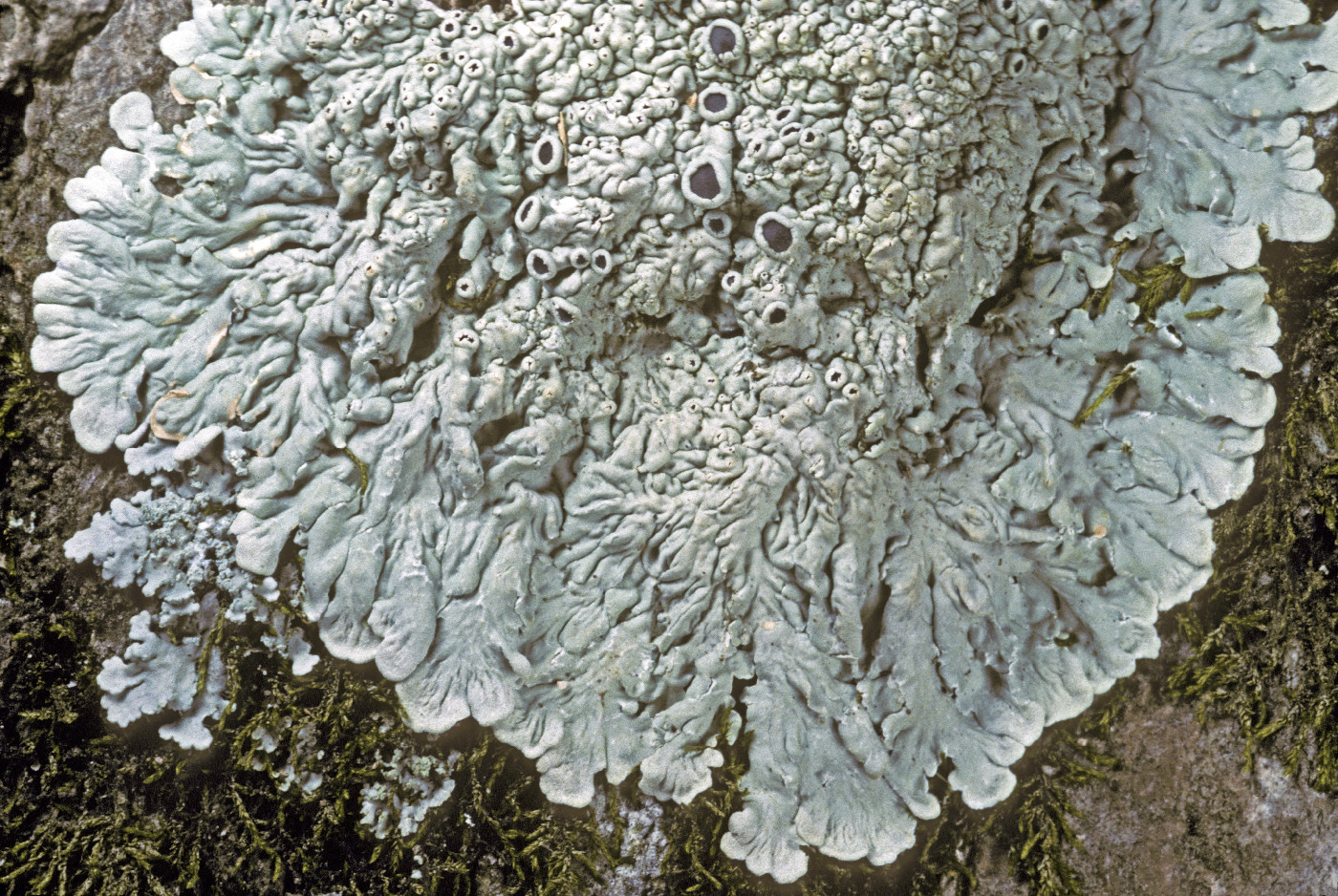
Consortium of Lichen Herbaria
- building a Global Consortium of Bryophytes and Lichens as keystones of cryptobiotic communities -
- Home
- Search
- Images
- Species Checklists
- US States: O-Z >
- US National Parks
- Central America
- South America
- US National Parks
- Southern Subpolar Region
|
Family: Caliciaceae |
Nash, T.H., Ryan, B.D., Gries, C., Bungartz, F., (eds.) 2004. Lichen Flora of the Greater Sonoran Desert Region. Vol 2. Life habit: lichenized Thallus: foliose, continuous, lobate lobes: radiating, but sometimes irregular, discrete or confluent, lobe tips: usually rotund or ±truncate, eciliate upper surface: white, whitish gray to brownish gray, leaden to bluish gray or stramineous, +plane to convex or concave towards the periphery, shiny or dull, usually epruinose but a few species pruinose at the lobe tips, with or without soralia, polysidiangia (= pustulate isidia) or isidia; pseudocyphellae: rare, if present at lobe tips, laminal and/ or marginal upper cortex: paraplectenchymatous, formed by vertically arranged hyphae medulla: usually white or faintly yellow, but scarlet red in a few species, upper part encrusted with lichen acids and a lower part mostly devoid of lichen acids, some species with an ochraceous K+ purple pigment in the lowest part of the medulla photobionts: primary one a chlorococcoid Trebouxia, secondary photobiont absent lower cortex: prosoplectenchymatous, formed by longitudinally arranged hyphae lower surface: usually brownish black to black, in a few species pale gray to light brown, attachment by tubercle-like outgrows (hapters), erhizinate, lacking cyphellae, pseudocyphellae and tomentum Ascomata: apothecial, laminal on thallus, orbicular, sessile to elevated on an internal stipe disc: black, often pale gray, sometimes reddish pruinose margin: prominent or reflexed, thalline, distinct and persistent; epihymenium: pale brown or red, K- or decolorizing in K; hypothecium: generally brown, dark brown to brown-black, in a few species pale brown to light brown asci: lecanoral, apex wall layers thickened, apex I+ blue, with distinct axial body, 8-spored ascospores: brown, 1-septate, thick-walled, mischoblastiomorphic, ellipsoid, 10-23 x 5-9 µm Conidiomata: usually present, pycnidial, laminal, when fully developed immersed in elevated warts conidia: +bacilliform to fusiform, formed pleurogenously, conidiophore-type VI (Vobis 1980), 3-4 x 0.5-1.2 µm Secondary metabolites: upper cortex atranorin and chloroatranorin, rarely with additional chloroxanthones; medulla with orcinol depsides, orcinol meta-depsides, triterpenes, quinones (canarione, rhodocladonic acid) Geography: predominately tropical and subtropical with few species extending to temperate or oceanic regions Substrate: mostly bark, wood, acidic rocks or mosses. |
Powered by Symbiota









